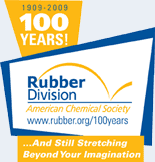![[ Visit ACS Rubber Website ]](images/logo.jpg) |
|
Centennial Elite SponsorsBecome a Centennial Elite Sponsor |
53 High-Temperature Elastomer Seal Material Testing and Selection for Downhole EnvironmentsTuesday, October 13, 2009: 2:30 PM
327 (David L. Lawrence Convention Center )
As drilling technology allows deeper and hotter reservoirs to be reached, oil and gas well operations must be able to withstand harsher environmental conditions. The wells in which the drilling and completion tools are used have become increasingly deeper, and consequently, the operating pressures and temperatures to which these tools are exposed have also increased. Hydrocarbon recovery operations involving acids, high pH, steam and high temperatures are particularly damaging to downhole sealing materials.
To meet the increased chemical and mechanical performance requirements of the harsh environments in these deep wells, new m This paper discusses seal material lab test results, namely mechanical properties, extrusion resistance, steam resistance, and bonding strength conducted up to 260°C for different compounds. Some of these compounds were successful and were able to show markedly improved performance in their respective tool designs. |









